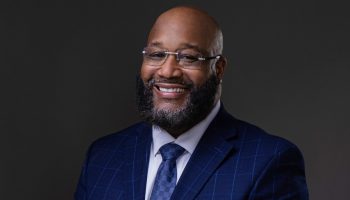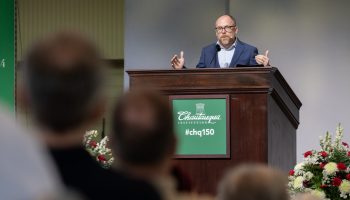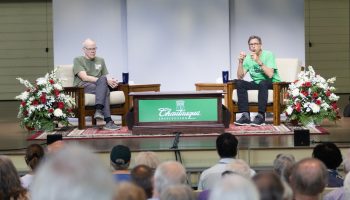
John Dominic Crossan believes the only radical difference between the East and Western Christianity’s portrayal of Jesus Christ’s life comes from the historical imagery of his resurrection.
“People don’t realize there’s actually no direct description or depiction of the resurrection in the New Testament, only its effects,” said Crossan, a historian and New Testament scholar. “That left a vacuum that forced artists to ask, ‘How do we depict this thing if there’s no description?’ ”
Crossan’s new book, Resurrecting Easter, deals with the historical differences in how the East and the West attempted to fill this literary gap with imagery and tradition.
At 2 p.m. Tuesday, July 9 in the Hall of Philosophy, Crossan will discuss tracing “Jesus: From Archaeology to Text,” and the significance of Easter imagery in collective historical consciousness.
Crossan’s lecture continues an exploration of the Week Three interfaith theme, “What Archaeology Tells Us About Biblical Times.”
“Eastern Christianity has an absolutely different image of Easter than the West,” Crossan said. “Otherwise, the East and West’s (Biblical imagery) is pretty much the same. There’s usually a crucifixion. But when it comes to the resurrection, because there is no direct description of it in the New Testament, the East and the West come up with radically different imagery.”
Crossan and his wife, Sarah, spent about 15 years on 20 expeditions traveling all over Eastern Christendom as part of the writing process for Resurrecting Easter.
In the West, according to Crossan, it’s more typical to see the resurrection depicted as Jesus rising from his tomb into heaven by himself.
But in the East, Jesus is often portrayed as grasping the hands of people around him.
Crossan said the significance of the differences in Easter imagery go back to Paul the Apostle.
“Imagine someone saying to Paul, after he describes the resurrection in 1 Corinthians, ‘OK, Paul, we’ve all seen this crucifixion you keep talking about,’ ” he said. “ ‘We know what that’s like. Draw us a picture of the resurrection.’ Would he have drawn the Western image or the Eastern image? I think the Eastern depiction is in closer continuity to the New Testament.”
In 1985, Crossan joined the newly formed Jesus Seminar, a controversial collection of critical Biblical scholars that measured the historicity of the stories surrounding Jesus Christ.
“The idea behind the Jesus Seminar was that scholars could discuss pretty much anything they wanted, no matter how radical it sounded,” he said. “Scholars could ask, ‘Did Jesus say this? Did Jesus do that? Did Mark make it up?’ We wanted to do (the Seminar) out in public.”
The Jesus Seminar wanted to use a public platform to show people how historians determined whether or not something in the life of Jesus Christ was historically accurate, or if it was a liturgical parable.
“For example, it’s said that Jesus was crucified, and crucified alone,” Crossan said. “And from that, we draw huge historical implications. The very fact that we can tell he was crucified and the rest of the 12 or 11 other disciples weren’t crucified in a row with him, tells me immediately that Roman judgement was that he was a nonviolent revolutionary. Not just a nonviolent nuisance. A nonviolent revolutionary.”
The story of Jesus’ crucifixion has led Crossan to believe that “the salvation of our species is nonviolent resistance.”
“Otherwise, violence tends to spiral,” he said. “And it has been spiralling out for about 10,000 years. The only way to stop this spiral of violence is nonviolent resistance to violence. That’s the message and meaning I’m getting from this.”




